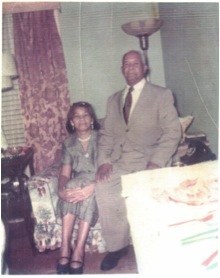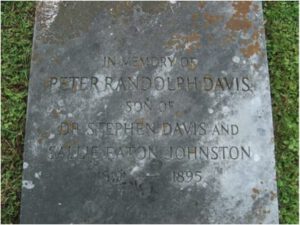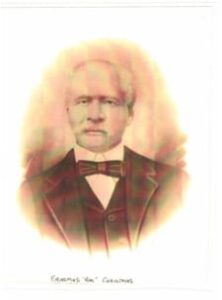As the series Finding Your Roots with Henry Louis Gates, Jr. continues its 10-week run on PBS, The Blog will feature posts from 23andMe’s Ancestry Ambassadors featuring their own stories about using DNA to dig into ancestry.
By Shannon Christmas

African American genealogy remains a challenging jigsaw puzzle where half of the pieces seem irrevocably lost. Many families scarred by chattel slavery buried their pasts to distance themselves and their progeny from the horrors of bondage.
A Fractured History
Now, advances in genetics and Internet technology have unearthed some of the long-buried pieces of our significantly fractured history.
Uncovering some of those missing pieces for my family required an open mind. One of my paternal great-grandmothers, Katie Lee Davis of Warren County, North Carolina, inherited a revisionist version of our family’s past.
In her correspondence with one of my cousins, Grandma Katie identified her ancestors, wrote lovingly of her paternal aunts, and recalled never having known a former slave among her relatives. Yet in 2010, 16 years after her death, revelations about Grandma Katie’s ancestors began to tell a different story.

Marriage and death records from Warren County list Grandma Katie’s paternal grandparents as Henry and Lucinda Davis, an African-American couple about whom little else is known.
A Pedigree
However, in the summer of 2010, Ray, the husband of one of my father’s first cousins, emailed me a pedigree outline that omitted Henry’s name and replaced it with a Peter “White” Davis. The glaring conflict between the government documents I had examined and this new email raised questions.
Who was Peter “White” Davis? Was he really Grandma Katie’s grandfather?
The answers to those questions only heightened my curiosity. Ray reported that Peter “White” Davis, a slave owner formally named Peter Randolph Davis, allegedly sired many mulatto children with his slaves. According to one of Katie’s elderly distant relatives, Grandma Katie’s father, Richard D. Davis, was one of those mulatto children.

Tracing Peter Randolph Davis’ lineage yielded another discovery. Peter’s maternal great-grandparents included a couple I had encountered in previous research: Captain William Green and Mary Elizabeth Christmas. Captain Green and his wife, Mary, were indirect ancestors of my great-grandfather, Richard Christmas.
A Warren County Planter
Richard Christmas’s paternal grandfather, Lewis Yancey Christmas, a wealthy Warren County planter and attorney, took two slaves as common-law wives. The first union produced 12 children, including my great-great-grandfather, Erasmus Christmas.
If the Peter Randolph Davis story was accurate, then my great grandfather Richard Christmas and my great grandmother Katie Lee Davis were not only husband and wife for 60 years, but 4th cousins once removed.
The possibility of a consanguineous marriage, though initially unsettling, provided an opportunity to verify this new paternity claim using DNA testing. Web-based DNA analysis tools allow one to search an individual’s raw DNA data file from 23andMe for runs of homozygosity and DNA segments indicating one’s parents shared recent common ancestors.
Cousin Test
Since my grandfather, the son of Richard Christmas and Katie Lee Davis had tested with 23andMe, the truth sat just a few keystrokes away. GEDMatch.com’s “Cousin Test for Parents” identified nine runs of homozygosity among my grandfather’s 22 autosomal chromosomes, amounting to more than 55 centimorgans (cM) of DNA, an amount that suggests his parents were at least 4th cousins.
A similar tool created by mathematician David Pike (http://www.math.mun.ca/~dapike/FF23utils/roh.php) replicated the results. Richard Christmas and Katie Lee Davis shared a bloodline, proving that Peter Randolph Davis was Katie’s paternal grandfather.

In early 2012, I obtained a slave inventory from an estate file for Dr. Stephen Davis (Peter Randolph Davis’ father); the family of Henry and Lucinda Davis appears among the slaves listed.
Like so many former slaves, the paternal relatives with whom my great-grandmother spent her earliest years clearly sought to conceal their dark history to embrace a brighter future. But DNA illuminated how that past proved prologue.
23andMe provides genetic testing services for informational purposes; your results may or may not help you find or identify relatives or family members.
When not updating pedigree charts or mapping his chromosomes, Shannon Christmas is the founder and Chief Market Advisor/Design Strategist of The Christmas Collective, a strategic real estate and land use consulting atelier.



